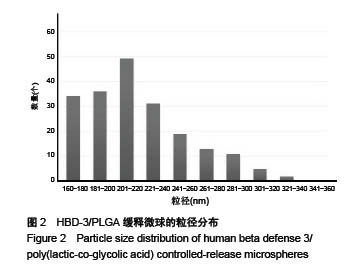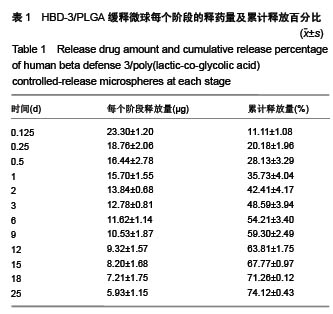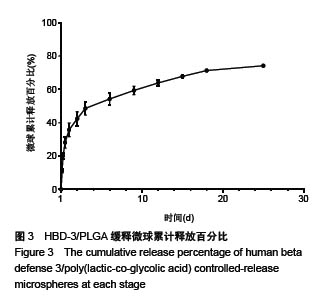| [1]吴宇黎,王继芳.感染人工关节周围生物膜对细菌影响的研究[J].中华外科杂志,1997,35(8):469-471.[2]吴宇黎,李晓华,钱齐荣,等.感染性人工关节生物膜中细胞外多粘质物质对抗生素的影响[J].中国矫形外科杂志, 2002,9(10): 980-981.[3]Esteban J, Molina-Manso D, Spiliopoulou I,et al. Biofilm development by clinical isolates of Staphylococcus spp. from retrieved orthopedic prostheses.Acta Orthop. 2010;81(6): 674-679.[4]Al-Ahmad A, Wiedmann-Al-Ahmad M, Faust J, et al. Biofilm formation and composition on different implant materials in vivo. J Biomed Mater Res B Appl Biomater. 2010;95(1): 101-109.[5]吴宇黎,王继芳,卢世璧,等.大剂量灌注冲洗对感染性假体表面生物膜中细胞外多粘质物质(ESS)的影响[J].中国矫形外科杂志, 2001,8(8):791-792.[6]吴宇黎,王继芳,卢世璧,等.假体表面感染性生物膜中细胞外多粘质物质对淋巴细胞和多形核白细胞功能的影响[J].第二军医大学学报,2001,22(z1): 37-39.[7]Bruellhoff K, Fiedler J, Möller M, et al. Surface coating strategies to prevent biofilm formation on implant surfaces. Int J Artif Organs. 2010;33(9):646-653.[8]Zanger P, Holzer J, Schleucher R, et al. Severity of Staphylococcus aureus infection of the skin is associated with inducibility of human beta-defensin 3 but not human beta-defensin 2. Infect Immun. 2010;78(7):3112-3117.[9]Hirsch T, Spielmann M, Zuhaili B, et al. Human beta-defensin-3 promotes wound healing in infected diabetic wounds. J Gene Med. 2009;11(3):220-228.[10]Reichel M, Heisig A, Heisig P, et al. Skin bacteria after chlorhexidine exposure-is there a difference in response to human beta-Defensin-3. Eur J Clin Microbiol Infect Dis. 2010; 29(6):623-632.[11]李冠楠,夏雪娟,隆耀航,等.抗菌肽的研究进展及其应用[J]. 动物营养学报,2014,26(1):17-25.[12]Warnke PH, Springer IN, Russo PA, et al. Innate immunity in human bone. Bone. 2006;38(3):400-408.[13]Dhople V, Krukemeyer A, Ramamoorthy A. The human beta-defensin-3, an antibacterial peptide with multiple biological functions. Biochim Biophys Acta. 2006;1758(9): 1499-1512.[14]韩敏,苏秀霞,李仲谨.载药微球制剂的研究进展[J].应用化工, 2007,36(5):493-495.[15]Karal-Y?lmaz O, Serhatl? M, Baysal K, et al. Preparation and in vitro characterization of vascular endothelial growth factor (VEGF)-loaded poly(D,L-lactic-co-glycolic acid) microspheres using a double emulsion/solvent evaporation technique. J Microencapsul. 2011;28(1):46-54.[16]罗字燕,张永明,吴传斌. 一种聚乳酸聚乙醇酸缓释微球的制备工艺[J].中国医院药学杂志,2011,31(11) :875-878 .[17]罗宇燕,李姝瑾,张永明.聚乳酸聚乙醇酸微球体外突释的影响因素的研究[J].今日药学,2011,21(4):207-210 .[18]Yang F, Song FL, Pan YF, et al. Preparation and characteristics of interferon-alpha poly(lactic-co-glycolic acid) microspheres. J Microencapsul. 2010;27(2):133-141.[19]Thomes B, Murray P, Bouchier-Hayes D. Development of resistant strains of Staphylococcus epidermidis on gentamicin-loaded bone cement in vivo. J Bone Joint Surg Br. 2002;84(5):758-760.[20]Wilmes M, Cammue BP, Sahl HG, et al. Antibiotic activities of host defense peptides: more to it than lipid bilayer perturbation. Nat Prod Rep. 2011;28(8):1350-1358.[21]Schibli DJ, Hunter HN, Aseyev V, et al. The solution structures of the human beta-defensins lead to a better understanding of the potent bactericidal activity of HBD3 against Staphylococcus aureus. J Biol Chem. 2002;277(10): 8279-8289.[22]Levón J, Al-Samadi A, Mackiewicz Z, et al. Human beta-defensin-3 producing cells in septic implant loosening. J Mater Sci Mater Med. 2015;26(2):98.[23]Ford Versypt AN, Pack DW, Braatz RD. Mathematical modeling of drug delivery from autocatalytically degradable PLGA microspheres--a review. J Control Release. 2013; 165(1): 29-37.[24]Qi F, Wu J, Fan Q, et al. Preparation of uniform-sized exenatide-loaded PLGA microspheres as long-effective release system with high encapsulation efficiency and bio-stability. Colloids Surf B Biointerfaces. 2013;112:492-498.[25]Wang Y, Li P, Kong L. Chitosan-modified PLGA nanoparticles with versatile surface for improved drug delivery. AAPS Pharm Sci Tech. 2013;14(2):585-592.[26]李卫红,司鹏,雷文.药用合成高分子缓、控释材料研究进展[J].高分子通报,2015(1):56-59.[27]Astete CE, Sabliov CM. Synthesis and characterization of PLGA nanoparticles. J Biomater Sci Polym Ed. 2006;17(3): 247-289.[28]高飞,赵燕.重组人β防御素-3抗菌活性及影响因素的研究[J].生物学通报, 2016,51(6):53-56.[29]钱婷玉,崔爱军,彭松,等.聚乳酸-羟基乙酸(PLGA)及其载药微球的制备研究[J].化工新型材料,2015,43(12):143-145.[30]孙美丽,班俊峰,黄思玉,等.PLGA微球的载药量和包封率的影响因素及控制[J].广东药学院学报,2011,27(6):644-648.[31]罗宇燕,麦海燕 ,黎呐,等.复乳法及其改良法制备的干扰素PLGA微球载药释药特性的对比[J].中山大学学报:自然科学版, 2014 ,53(3):110-114.[32]Qian F, Ni N, Burton LS, et al. Sustained release subcutaneous delivery of BMS-686117, a GLP-1 receptor peptide agonist, via a zinc adduct. Int J Pharm. 2009;374 (1-2):46-52.[33]Xuan J, Lin Y, Huang J, et al. Exenatide-loaded PLGA microspheres with improved glycemic control: in vitro bioactivity and in vivo pharmacokinetic profiles after subcutaneous administration to SD rats. Peptides. 2013;46: 172-179.[34]Zaky A, Elbakry A, Ehmer A, et al. The mechanism of protein release from triglyceride microspheres. J Control Release. 2010;147(2):202-210.[35]Wang Y, Gu B, Burgess DJ. Microspheres prepared with PLGA blends for delivery of dexamethasone for implantable medical devices. Pharm Res. 2014;31(2):373-381. [36]Gu B, Burgess DJ.Prediction of dexamethasone release from PLGA microspheres prepared with polymer blends using a design of experiment approach.Int J Pharm. 2015; 495(1): 393-403. [37]Zolnik BS, Burgess DJ.Evaluation of in vivo-in vitro release of dexamethasone from PLGA microspheres.J Control Release. 2008; 127(2):137-145.[38]Zolnik BS, Leary PE, Burgess DJ.Elevated temperature accelerated release testing of PLGA microspheres.J Control Release. 2006; 112(3):293-300. [39]Liu B, Dong Q, Wang M, et al.Preparation, characterization, and pharmacodynamics of exenatide-loaded poly(DL-lactic-co-glycolic acid) microspheres.Chem Pharm Bull (Tokyo). 2010; 58(11):1474-1479.[40]Lim SM, Eom HN, Jiang HH, et al. Evaluation of PEGylated exendin-4 released from poly (lactic-co-glycolic acid) microspheres for antidiabetic therapy.J Pharm Sci. 2015; 104(1):72-80. |
.jpg)




.jpg)